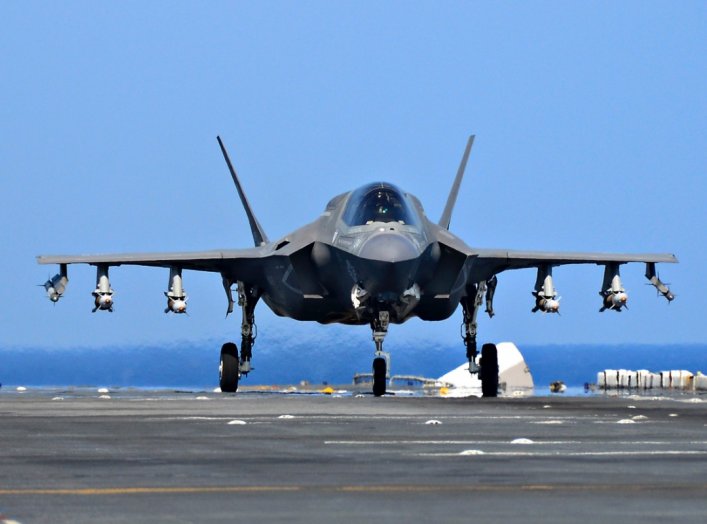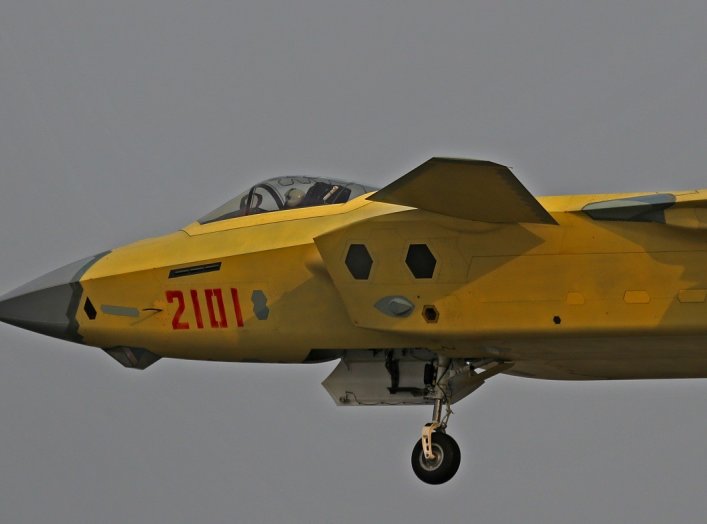
The U.S. Navy will need a new “sixth-generation” warplane eventually to follow the F-35C stealth fighter that’s just beginning to enter service. But no one has any idea what that new plane might look like. Not even the Navy.
The Navy in February 2019 declared its first front-line F-35C squadron “ready for flight.” Strike-Fighter Squadron 147, based in California, in 2021 is slated to embark on the aircraft carrier USS Vinson for the type’s first deployment.
The fleet aims to integrate a 10-plane F-35C squadron into each of its nine carrier air wings, which embark on the 11 Ford- and Nimitz-class carriers. The U.S. Marine Corps plans to equip four squadrons with F-35Cs as that service’s contribution to the carrier wings.
It will be at least a decade before the sea services deploy all of the roughly 300 F-35Cs they plan to acquire at a cost of around $100 million per plane. The stealth fighters could fly for 25 years or longer before they wear out.
By the time the F-35Cs arrive, each wing also will include three F/A-18E/F squadrons plus detachments of EA-18G radar-jamming planes, E-2 radar planes, V-22 transports and MQ-25 tanker drones. All of the types are in production and none should leave service before the mid-2030s, at the earliest.
In other words, the Navy is in no rush to decide what its next warplane should look like. Hence the ambivalent comments from Chief of Naval Operations Adm. Mike Gilday. “I do think we need an aviation combatant, but what the aviation combatant of the future looks like?” Gilday said at U.S. Naval Institute’s Defense Forum Washington conference in early December 2019.
“I don’t know yet,” Gilday added, according to USNI News. “I think there’s going to be a requirement to continue to deliver a seaborne launched vehicle through the air that’ll deliver an effect downrange. I do think that that will likely be a mix of manned and unmanned. The platform which they launch from? I’m not sure what that’s going to look like.”
Gilday’s remarks underscore the uncertainty in the Pentagon regarding next-generation aircraft programs. The Navy isn’t alone in needing a new warplane but being unclear as to what that actually means. The U.S. Air Force, too, is struggling to define the plane that should follow that service’s F-35A. The Air Force plans to buy as many as 1,700 F-35s.
In April 2018, senior Air Force leaders told Congress there was “no silver-bullet solution” when it comes to developing a new fighter, The War Zone reporters Joseph Trevithick and Tyler Rogoway explained.
The service has established the Next-Generation Air Dominance office in order to being developing concepts for the F-35-successor. Those concepts aren’t just traditional manned fighters. “As NGAD [effort] has evolved, it has steadily shifted more and more toward unmanned and pilot-optional concepts linked together by powerful networks so that they can operate at least semi-autonomously, if not autonomously, as necessary,” Trevithick and Rogoway noted.
Not coincidentally, the Air Force’s Skyborg program is scrambling to develop the software and hardware for operating inexpensive, missile-armed drones as so-called “loyal wingmen” for manned fighters.
Remarkably, the service also is mulling an air-to-air mission for its new B-21 stealth bomber. Maj. Gen. Scott L. Pleus, Pacific Air Forces Director of Air and Cyber Operations, floated that idea in September 2019 comments to Air Force magazine.
“If we were to characterize [NGAD] as a fighter, we would be … thinking too narrowly about what kind of airplane we need in a highly contested environment,” Pleus told Air Force. “A B-21 that also has air-to-air capabilities” and the ability “to work with the family of systems to defend itself, utilizing stealth—maybe that’s where the sixth-generation airplane comes from.”
The first B-21 could fly as soon as 2021. The Air Force wants at least 100 of the subsonic, highly-stealthy new bombers for a cost of around $600 million per plane.
If we extrapolate officials’ recent comments decades into the future, it’s possible to imagine the Air Force in the 2030s and 2040s operating include a dwindling number of older fighters plus F-35s and air-to-air-capable B-21s, all-controlling expendable wingman drones.
The Navy and Marines also could embrace that construct, although it’s worth noting that the sea services don’t at present possess any combat aircraft as large as a bomber. Think tanks however have urged the fleet to acquire unmanned bombers that could help to extend the striking range of the carrier air wings.







